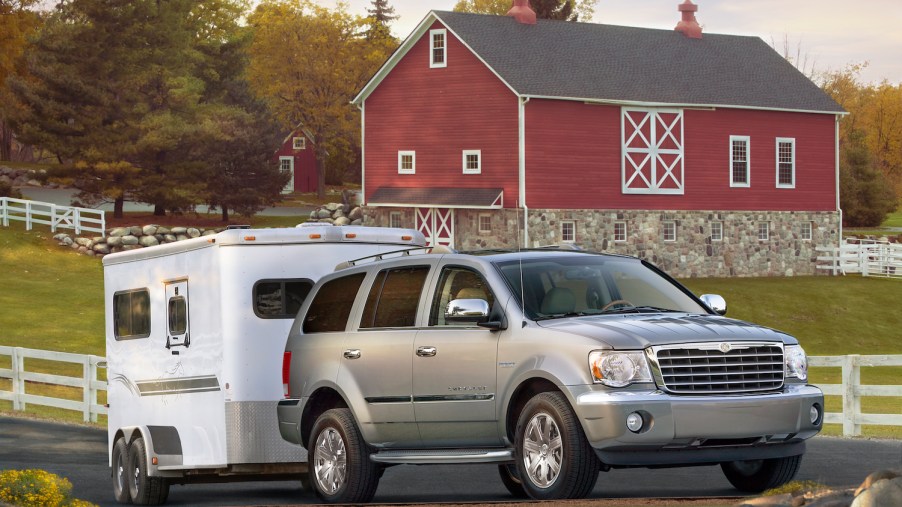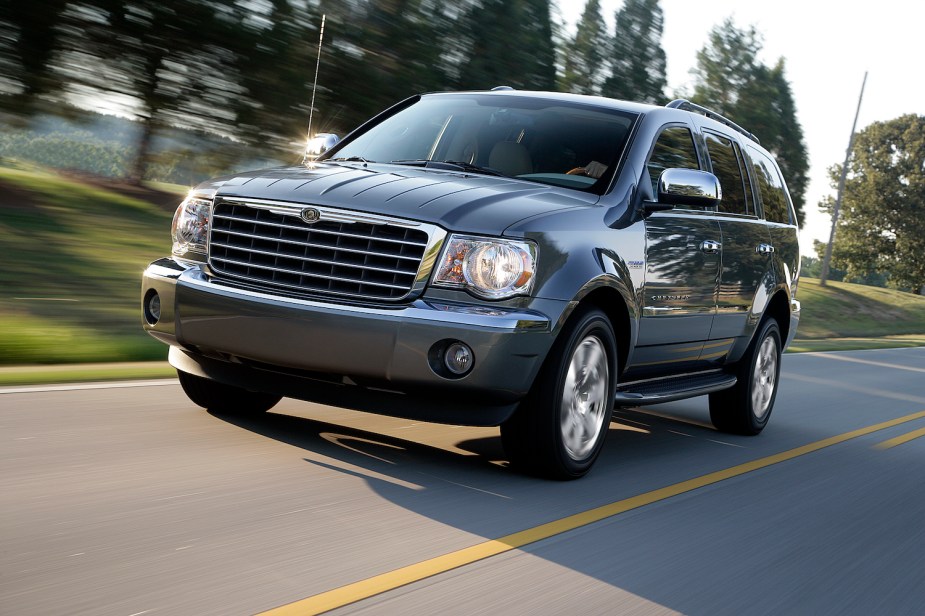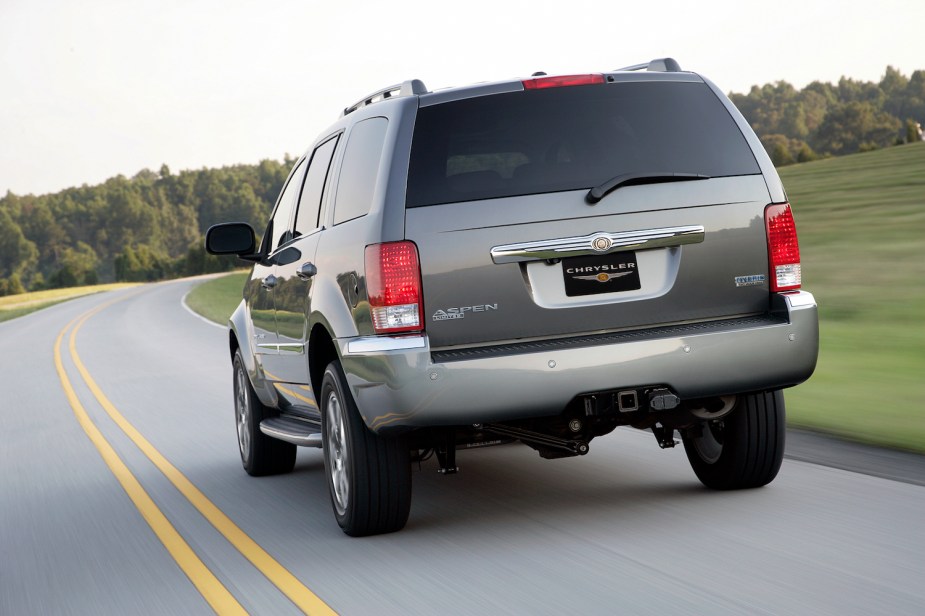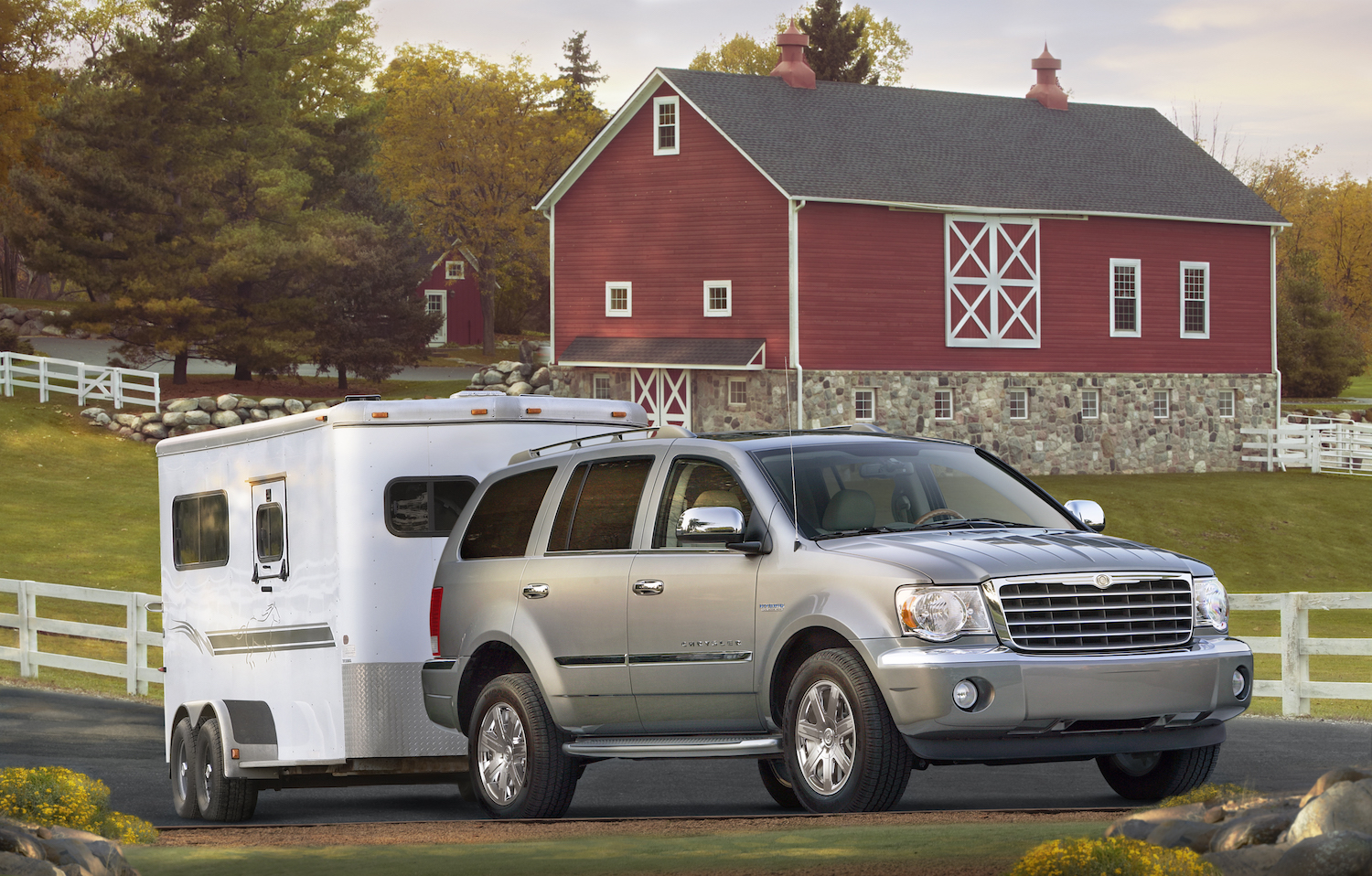
Chrysler’s Aspen SUV Was a Hybrid Ahead of Its Time–and it Flopped
Chrysler is one of the only major American automakers that offer no SUVs–but it wasn’t always this way. The 2007-2009 Chrysler Aspen SUV was based on the Dodge Durango. It featured three rows of seats, available AWD, and a hybrid HEMI that boasted better fuel savings than the modern eTorque mild-hybrid system. You might even call it a predecessor to Jeep’s current Grand Wagoneer.
The 2009 Chrysler Aspen was an early full-size hybrid SUV

One of the most unique features of the Chrysler Aspen was its short-lived hybrid HEMI V8 option. The powertrain was the product of a joint venture between Daimler-Chrysler, General Motors, and BMW.
The four automakers came up with a transmission-sized unit that included four mechanical gears and two 87-horsepower electric engines. The so-called electric constantly variable transmission (eCVT) was capable of regenerative braking, as well as keeping a large V8 engine in a vary narrow RPM band for maximum MPG–according to Green Car Reports.
Mercedes used the so-called Two Mode hybrid project’s eCVT in its ML450 mid-size SUV. BMW dubbed it the ActiveHybrid system and offered it in the X6. General Motors used the technology in the second generation of its hybrid Chevrolet Silverado 1500 and GMC Sierra 1500.
Chrysler Corporation put the eCVT behind its 5.7-liter HEMI V8. The resulting 2009 Dodge Durango/Chrysler Aspen powertrain still made 380+ horsepower. But it improved the regular V8’s efficiency (13 city/18 highway MPG) by 6 MPG in stop/go traffic (19 city/20 highway MPG).
The Aspen was a victim of slowing vehicle sales

Chrysler announced its hybrid Aspen and Dodge Durango SUV powertrains in 2008, for the 2009 model year. Then in the fall of 2008, a recession obliterated the company’s new vehicle sales. Chrysler Corporation struggled financially and in October of 2008, it announced it would close its Newark Assembly facility in Delaware, at the end of the year.
The Newark Assembly facility was the only place Chrysler was building its Aspen/Dodge Durango. The company ceased production of the SUV on December 19th, 2008. Chrysler Corporation survived the recession by cutting down its lineup across its Dodge, Jeep, and Chrysler brands. It would eventually merge with Fiat to creat Fiat Chrysler Automobiles and pivot its focus away from hybrids and towards Fiats existing small, efficient engines.
The Chrysler Aspen hybrid SUV paved the way

Back in 2009, Edmunds declared that the “Chrysler Aspen’s moment has passed.” The publication concluded that the full-frame SUV’s weight impacted its handling and efficiency; with the emergence of the third-row crossover it was “a lonely Neanderthal surrounded by smarter Homo sapiens.”
The reviewers were correct that the Aspen would be short-lived, but because of economic factors, not because of the death of the full-size SUV. Today, features such as a third row of seating and available AWD are common for luxury-level full-size SUVs. The Durango/Grand Cherokee is alive and well. Stellantis’ latest truck-based SUV is the Wagoneer/Grand Wagoneer, badged as a Jeep not a Chrysler.
Every 2022 Grand Wagoneer features a third row of seating, full-time 4WD, and a HEMI V8 with an eTorque mild-hybrid system. Its success proves that the Chrysler Aspen wasn’t the last of its kind, but an SUV ahead of its time. If the Chrysler Aspen had survived, the modern Grand Wagoneer might even be wearing a different badge.
Next, learn all about Dodge’s Two Mode hybrid project see the Chrysler Aspen in action for yourself in the video below:
Learn more about the Chrysler Aspen in this deep dive into its features and history:



